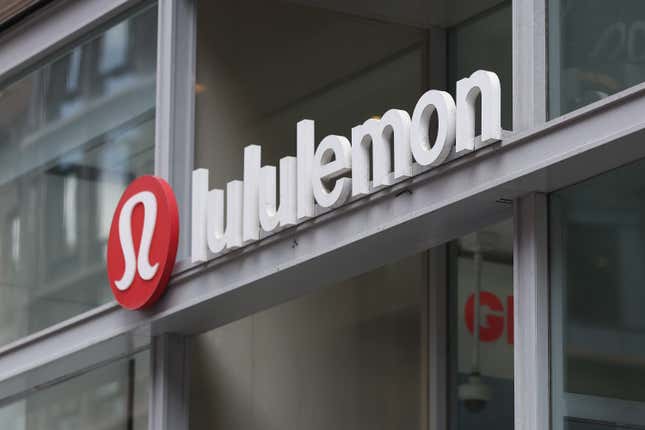
In This Story
Apparel and footwear stocks are taking a beating in the aftermath of President Donald Trump’s “Liberation Day” press conference on Wednesday, where he announced sweeping new tariffs on nearly all U.S. trading partners.
Nike (NKE-2.71%) shares tumbled more than 13% in pre-market trading Thursday. Lululemon (LULU-1.05%) fell nearly 15%, while Deckers (DECK-1.38%), the maker of Uggs and Hoka sneakers, dropped 14%. American Eagle (AEO-2.69%) and Abercrombie & Fitch (ANF-0.62%) slid 9% and 11%, respectively.
The selloff followed Trump’s announcement of what he called “reciprocal tariffs” on 50 countries, along with a baseline 10% tariff on imports from all other nations. The new tariffs, levied on a country-by-country basis, hit China and Vietnam — two of the biggest suppliers to the apparel and footwear industries — especially hard. China now faces an additional 34% tax on its exports to the U.S., while Vietnam was hit even harder with a 46% tariff.
The baseline 10% tariff will take effect this Saturday at 12:01 a.m. ET, with the country-specific levies set to follow on April 9 at the same time.
For the fashion industry, the impact could be severe. The U.S. imports about 51% its apparel and footwear from China and Vietnam, according to Goldman Sachs (GS-1.29%). Vietnam alone accounts for 34% of U.S. footwear imports. Investors fear the tariffs will lead to higher prices, which could slow sales and squeeze margins.
Lululemon appears particularly vulnerable. The athleisure company sources about 40% of its products from Vietnam and another 17% from Cambodia, which was hit with a 49% tariff. Overall, Lululemon faces a blended tariff rate of 39% — the average tariff rate across all its imported goods.
With more than 60% of Lululemon’s sales coming from the U.S. and a merchandise margin of 70%, the tariffs could result in a 700 basis point (7%) margin hit if the company takes no action, William Blair analyst Sharon Zackfia wrote in a note on Thursday.
Zackfia said Lululemon is likely to pursue mitigation strategies, including negotiations with vendors, cost-saving and operational strategies, and selective price increases.
“On the latter, we estimate an 11% to 12% across-the-board price increase in the U.S. would fully protect dollar profit (albeit diluting margins), although we expect any price increases will likely be more surgical than an across-the-board hike,” Zackfia wrote.